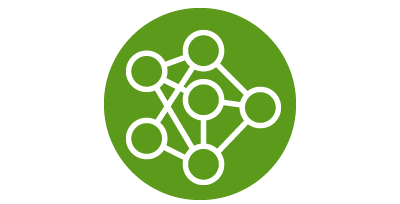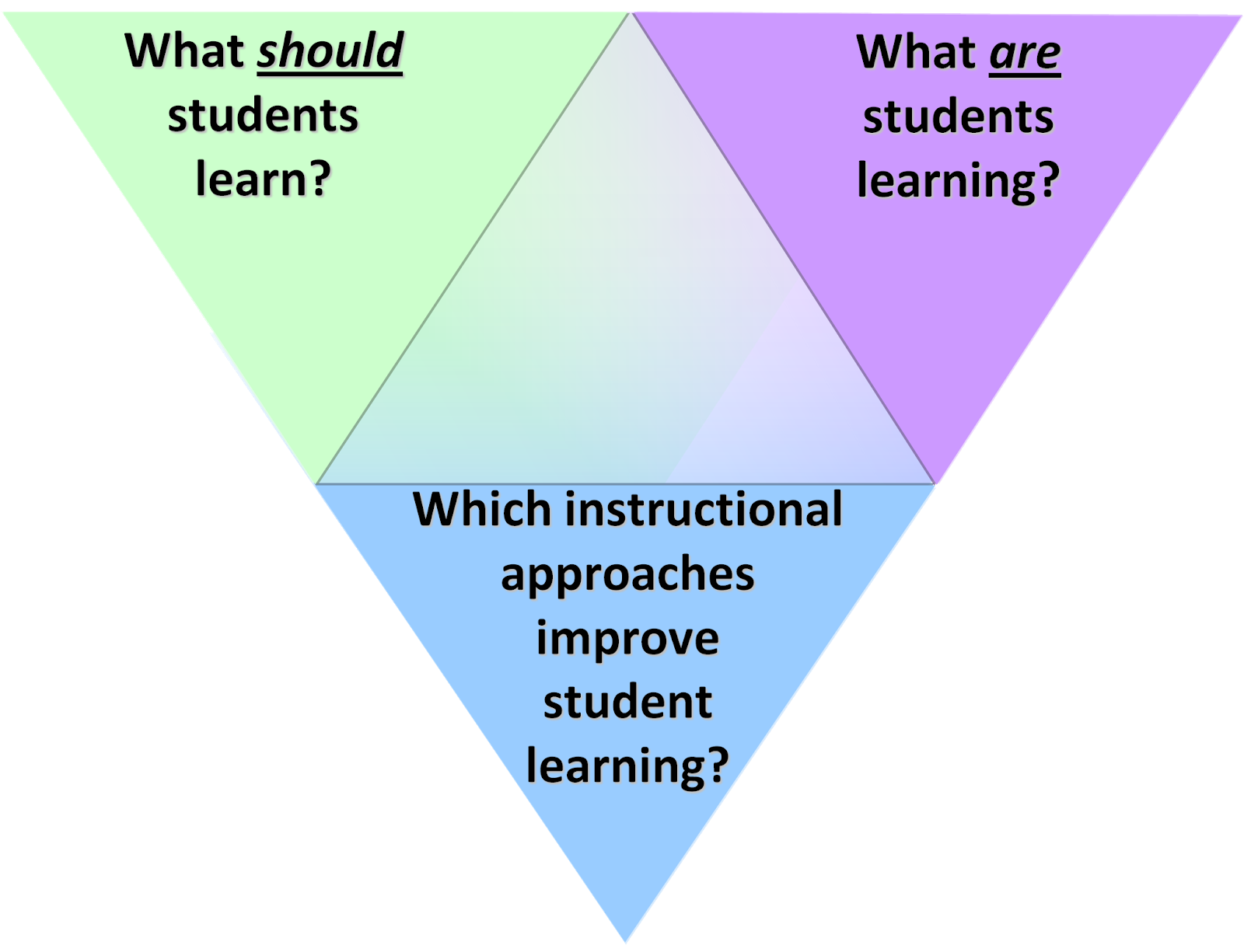- CWSEI Home /
- About /
- Science Education Initiative (SEI) Model
Science Education Initiative (SEI) Model
 Overview of the SEI Model
Overview of the SEI Model
Here we outline some key aspects of the SEI Model including an overview of the goals, the three core components for improving science education, how the model was implemented, and the benefits of the initiative to students, faculty, and the broader science education community. For more reading, Carl Wieman's book, Improving How Universities Teach Science, reviews lessons learned from the SEI approach and Chasteen and Code's The Science Education Initiative Handbook offers a practical guide on how to foster change in university courses. More reading is also available under our Transforming STEM Education page.
Video: Listen to Dr. Cynthia Heiner, former STLF in Physics & Astronomy, describe the CWSEI model in a short talk, delivered to Imperial College London (2017).
What was the goal of the initiative?
The goal of the CWSEI was to achieve highly effective, evidence-based science education for all post-secondary students by applying the latest advances in pedagogical and organizational excellence. There are two aspects to the CWSEI’s “evidence-based” approach:
- Guiding efforts by the established evidence base (research) on how people learn science and effective pedagogical approaches
- Obtaining evidence as to the student learning achieved with current and new practices
The CWSEI supported work at the department level to achieve sustained widespread improvement in learning, based around three core components.
The Three Core Components for Improving Education

1. Establish what students should learn
This means faculty members laying out learning goals for the programs and all the individual courses in operational terms of what students should be able to do if they learned what the departmental faculty would like them to. These goals should include EVERYTHING the faculty hope students to learn, from concepts to vocabulary to specialized skills to habits of the mind. Establishing clear goals informs the design of curriculum, teaching, and evaluation methods.
2. Determine what students are actually learning
Systematically gather data on students’ problem-solving ability, conceptual understanding, attitudes, and skills in the areas where faculty members have identified learning goals. Methods for measuring student learning include:
- in-depth interviews to reveal student understanding
- observing problem-solving in the particular course of interest
- review of suitable research literature
- surveying current students and alumni
- analyzing exam results (particularly open-ended questions)
- using validated assessment instruments, and/or developing new ones to probe all those areas of learning that the department cares about
3. Improving student learning
This is primarily where teaching comes in and is addressing the question of "how do we now move the students from where they are to where they meet the goals we have set?" Strategies include:
- adapting proven practices
- introducing and testing new research-based practices
- ensuring course sequences and goals are properly aligned to student preparation and capabilities
- continuously evaluating effectiveness using methods detailed in Step Two
- Reviewing and revising learning goals as appropriate
Benefiting from Research on Learning and Effective Use of Technology
The three core components of improving education must be built on a solid foundation of research and effective use of technology.
Research in cognitive science and science education provides important insight into the teaching and evaluation of learning science. The development and utilization of information technology is also boosting the effectiveness and efficiency of science education (for example, see discussion in this BC Campus2020 Wieman think piece). There are numerous examples of how technology has been used to facilitate better learning in a cost-effective manner, and enables more rewarding and efficient use of faculty time through better dissemination and duplication of materials. The use of IT has also enhanced communication to allow better understanding of student progress and difficulties and more effective guidance.
Sustaining improvement
The CWSEI aims to assist departments to establish the materials, structures, and systems necessary to ensure the three core components become a permanent and integral part of every regular undergraduate course. This is a major endeavor with most of the time and effort involved being one-time costs with long term payoffs. It is crucial that the department reaches consensus on goals and assessment and fosters a willingness to jointly create, use, and reuse course material. There must also be organizational structures that support this educational model as a collective responsibility and effort. Thus the CWSEI is not about improving teaching per se, it is about changing the basic approach to teaching with the ultimate goal of widespread improvement in learning.
The CWSEI funded five larger and two smaller department programs at UBC with proposals based on the three core components. Funding will typically ranged from $1,000,000 to $2,000,000 total per program, provided over a six-seven year period. Ten per cent of the CWSEI budget was allocated to spread methods and materials developed by the CWSEI to the broader higher education community.
How was it implemented?
Science departments were selected for support through a competitive proposal process. These proposals laid out their departmental-wide plans for putting in place the three core components listed above. On the basis of these proposals, a subset of the departments were provided with substantial support over 5-7 years. Departments had wide latitude in how they use these funds, but primarily chose to use them to hire junior staff members, the Science Teaching and Learning Fellows (STLFs). The STLFs assisted faculty members in carrying out educational improvement efforts. These STLFs had expertise in the department's scientific discipline and knowledge in relevant science education methodology and research, and were assisted by the CWSEI central staff. See the Department Activities section for details of program activities.
» Guides on the initiative's setup and course transformation developed by the CWSEI and CU-SEI can be found on the Transforming STEM Education page
How Departments were selected to receive CWSEI funding
The budget of about $10M over 6-7 years supported five major programs at a level of $1 M - 1.75 M per program, and 2 smaller programs. A "program" could consist of an individual department or a coalition of departments. Carl Wieman met with each Faculty of Science department in September 2006 to discuss the CWSEI. Following those meetings and incorporating the input they provided, there was a request for brief proposals from the science departments. On the basis of those proposals, two programs were selected for full support (Earth & Ocean Sciences and Life Sciences) and several departments were selected to receive seed funding. A second request for proposals was issued in July 2007. The Physics & Astronomy and Computer Science Departments were selected to receive full support, and other departments were selected to receive seed funding. The Mathematics department received full support in 2010. Funding proposals are available here for Earth and Ocean Sciences, Life Sciences, Physics & Astronomy, and Computer Science.
Broad Dissemination of Materials
An extensive repository of educational materials for numerous courses, including learning goals, assessment tools, diagnostic exams, educational materials and software, was developed by the CWSEI and its partner, the Science Education Initiative at the University of Colorado (also headed by Carl Wieman). Many of these materials have been made universally available online. The intention was to make it simpler and less expensive to replicate the CWSEI model at other institutions. It is also expected that, once the success of this approach has been shown through clearly demonstrated gains in learning and improved efficiency, it will spread throughout the sciences and to many other disciplines.
Benefits of the SEI Model
Benefits to Students
Students, regardless of their major or future career plans, will see how science is interesting and relevant in the modern world. They will develop complex problem-solving skills and know how to learn, rather than simply memorizing facts and plug-and-chug recipes. Science courses and programs will have clearly articulated educational goals and appropriate assessment tools. Both instructors and students will be able to monitor whether the students are achieving pre-determined goals, and receive timely feedback on their strengths and weaknesses and how to improve. Students will be guided by instructors with a good understanding of how people learn, common student difficulties with material being taught, and the best approach to overcome such difficulties. The curriculum and teaching methods will be designed and tested to achieve maximum student interest and learning.
Benefits to Faculty Members
Instructors will have access to extensive online materials to help make teaching less time consuming and more engaging and effective, including:
- Departmental consensus on desired educational outcomes for all courses and programs, as well as rigorous assessments of student mastery. This will reduce the spread in incoming student competencies and allow faculty members to assess what their students already know.
- Resources on effective pedagogical approaches and assessment and use of educational technology, supported by scientific data
- Guidance on student thinking about the specific material covered in each course, including what enhances student interest and motivation, difficulties students may face, and how to overcome them
- Extensive instructional materials developed and tested by previous instructors, with guidance on the most effective uses
- Methods for obtaining ongoing feedback on student thinking and progress, and for providing effective guidance to students to maximize their learning
For UBC faculty members, there will also be an established ongoing process for collegial collaboration in refining desired outcomes, instructional materials, and assessment tools.
Benefits to the Community
The purpose of science education is no longer simply to train the small fraction of the population who will become the next generation of scientists. We need a more scientifically literate populace to address the global challenges that humanity now faces and that only science can explain, and possibility mitigate, such as global warming. Additionally, we need a citizenry able to make wise decisions, informed by scientific understanding, about other complex issues such as genetic modification, choice of energy sources, resource extraction, and ecological diversity.
Moreover, the modern economy is largely based on science and technology, and for that economy to thrive and for individuals within it to be successful, we need most citizens to be technically literate and have complex problem-solving skills. By establishing an educational system that produces far more students with these and other abilities such as communication and teamwork, the CWSEI will benefit local and national industry.
These new purposes require us to make science education more effective and relevant for a large fraction of the entire population. It is particularly important to address the educational needs and aspirations of those members of the community that have traditionally been underrepresented as science learners and scientists. By improving the understanding and appreciation of science for all students, we will also impact students who would become the future K-12 teachers. By providing them with better understanding of science, better models for teaching science, and what it means to learn science, they will be far better equipped to instill understanding and interest in science in the children they teach.